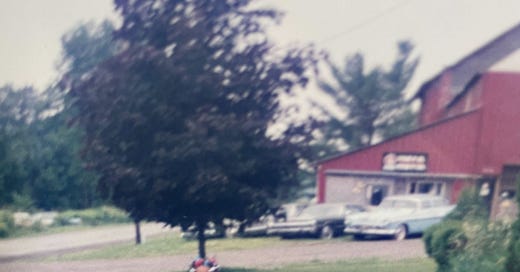I woke up one morning at the age of 10 in my niece’s room, sleeping on her floor. We grew up in the same house and had decided to have a sleepover together after moving to separate rooms months earlier. I woke up and rolled over to reach for the remote when I heard a pop and felt my kneecap slide out of place.
I screamed for twenty minutes in pain, waiting for someone two floors down to hear me. When my mom finally did, she was stunned. She didn’t know what to do but remembered my niece had knee surgery for a torn ACL that year, so she called her doctor. The doctor walked us through how to put my knee back in place. I collapsed crying as pain seared through my leg.
That was the beginning of what would be a year-long series of trips to a variety of specialists to find out what was wrong with me. Along with my joint problems, I had bad eyesight, a heart murmur, and flexibility in my hands and feet. We started with the obvious, an orthopedic doctor, who recommended us to another, who recommended us to another. I walked gingerly through the halls of UPMC facilities, afraid to test the limits of my knee braces. Afraid to move at all.
It wasn’t until we went to visit a neurologist that we found some answers. I was a problem sleeper, and I had gaps in my memory that couldn’t be explained. I got an EEG and reveled as the nurse set the nodes on my scalp, and watched as they scanned my brain for unusual activity. On a follow-up appointment with the neurologist, Dr. Painter, he asked questions with my hands in his, bending my fingers in all directions.
He did the same with my legs, bending, extending, and contracting. He looked at the results of the CAT scan that had been ordered and said that he believed I had Marfan Syndrome. The CAT scan showed that my kneecaps weren’t being supported, making them prone to slippage. When the doctor that ordered the scan saw it, he recommended knee replacement surgery. My mother scoffed and scolded him, I was only ten years old. Instead, I was put in physical therapy which helped but did not solve the problem.
Dr. Painter had finally given me what I wanted, a diagnosis. I exalted him for years, to the point where I wanted to be a doctor myself all the way up until my second year of college. I thought all doctors were infallible, even as my experiences with them scarred me.
On the day that I got the CAT scan, I had been told that I could keep my bra and underwear on. This changed when I got to the office, as my training bra had writing on it: Jansport. I had to take it off. In a room with my mom and a handful of female nurses, I felt fine. The CAT scan room had a large window that faced out toward a hallway that didn’t seem too busy. I took off my bra, exposing my chest, when a male doctor walked by and glanced at me. I froze as I watched him notice me and pass by, but when he doubled back to get a better look, I shivered. The nurses noticed him and scolded him, hustling a gown over my shoulders.
When I started struggling with my weight, doctors turned a blind eye to my eating disorder because they were happy I wasn’t fat anymore. My first trip to the OBGYN was painful and scary, and the doctor scolded me for being dramatic as she continued to probe me despite my pain. As a fat adult, doctors dismissed my other concerns, telling me that losing weight would solve all my problems.
When I was 18 and struggling with a hernia after I hurt myself exercising, doctors refused to believe that I wasn’t just hiding a pregnancy because I was a young Black woman.
Even the most well-meaning doctors are not without bias. I abandoned my love of science and medicine at 19 and focused on literature and poetry. I didn’t look back for years and years, never becoming curious about what my life would have looked like if I had gone to medical school.
That was until recently, when I found a renewed interest in science and medicine, the reason why I started this newsletter. I would be remiss not to mention my good friend Kimberly Garrett, an environmental toxicologist who I often have a laugh with about the strange, fru-fru pseudo-science posts we see on social media. Because of all the pre-med training I did, I can spot some misinformation, but certainly not all of it. That’s why I’m doing this project now. As we stare down year four of a global pandemic, it has become so important to me to know what medical professionals are saying, what scientists are saying.
Doctors are not infallible, they have room to grow and learn too, and they learn by starting a dialogue with their patients and everyday people they may come across. I believe this to be true in most academic settings. We let those with knowledge sit in ivory towers and hoard what they know, keeping it from us or publishing it behind paywalls. Occasionally, the media will pick up a study and slap on a sensationalist headline to get clicks. There’s so much we can learn from each other if there were fewer barriers to that knowledge.
I don’t think this newsletter is gonna solve this problem on a huge scale, but it’s a start. A new interview dropping next week, so stay tuned!




Dani this is beautiful and moving and such a needed conversation on navigating the medical system and our needs within it. As always, I cannot wait for more